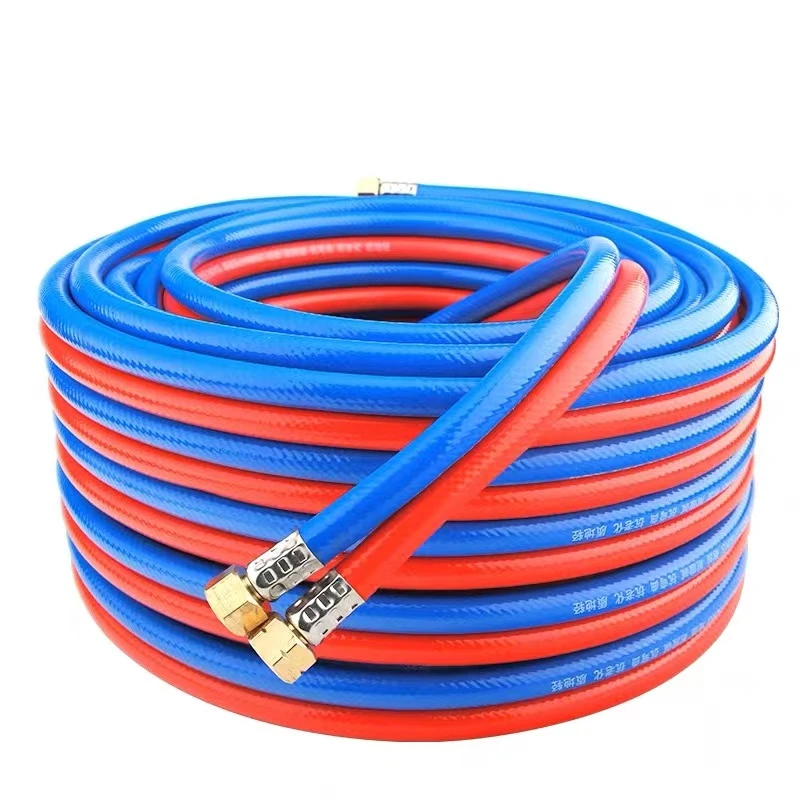pvc vs rubber vs polyurethane air hose
Comparing PVC, Rubber, and Polyurethane Air Hoses
Air hoses are essential tools across various industries, from construction to automotive repair. They transport compressed air from compressors to tools and machinery, and their performance can significantly affect productivity and efficiency. When choosing an air hose, one faces several options, primarily PVC, rubber, and polyurethane. Each material has distinct characteristics, advantages, and disadvantages, making it crucial to select the appropriate type based on specific needs.
PVC Air Hoses
Polyvinyl chloride (PVC) air hoses are popular for several reasons. They are lightweight, affordable, and resistant to abrasion and corrosion. PVC hoses perform well in mild weather conditions and maintain flexibility in temperatures as low as 20°F, making them suitable for indoor environments or light outdoor applications. However, they may experience stiffening in colder temperatures, affecting their performance.
One significant drawback of PVC hoses is their tendency to kink, which can impede airflow and reduce efficiency. They also have a shorter lifespan compared to rubber and polyurethane hoses, especially under strenuous conditions. While they are generally suitable for DIY projects or light-duty applications, professionals in demanding environments may find PVC hoses lacking in robustness.
Rubber Air Hoses
Rubber hoses are celebrated for their durability and strength. They can withstand extreme temperatures, ranging from -40°F to 190°F, making them ideal for outdoor use in diverse climates. Rubber air hoses are highly resistant to kinks, abrasion, and damage from chemicals, oils, and solvents, providing a longer service life compared to PVC.
One of the primary advantages of rubber hoses is their flexibility, which allows for easier maneuverability in tight spaces. This characteristic makes them a favorite among professionals who frequently move around job sites. Moreover, their ability to maintain structural integrity under pressure ensures reliable airflow, essential for high-performance tools.
pvc vs rubber vs polyurethane air hose

However, rubber hoses are typically heavier and more expensive than their PVC counterparts. The price may deter DIY enthusiasts or those looking for a budget-friendly option. Additionally, over time, rubber can degrade when exposed to UV rays, leading to cracked surfaces and reduced longevity if not properly cared for.
Polyurethane Air Hoses
Polyurethane (PU) air hoses offer a balanced alternative, marrying some of the best attributes found in both PVC and rubber. These hoses are extremely lightweight, making them easy to handle, and they exhibit excellent flexibility and kink resistance, even in colder temperatures. This flexibility promotes ease of use in various applications without losing performance.
The durability of polyurethane hoses is noteworthy; they resist abrasions and are highly resistant to punctures. PU hoses also have excellent memory retention, meaning they return to their original shape after being coiled or bent, reducing storage challenges. Furthermore, they are less susceptible to environmental impacts, such as UV exposure, ensuring longevity and consistent performance.
However, while polyurethane hoses are generally more durable than PVC, they tend to be pricier than both PVC and rubber hoses. This cost may be a consideration for those on a tighter budget. Additionally, although they perform well in most scenarios, they may not match the extreme temperature tolerance of rubber hoses.
Conclusion
Choosing the right air hose is essential for ensuring efficient workflow and optimal performance in any application. PVC hoses are great for light-duty tasks where budget restrictions exist, while rubber hoses provide the strength and durability needed for heavy-duty applications. Polyurethane hoses offer a versatile solution that combines lightweight design with excellent durability, making them suitable for a variety of settings.
Ultimately, the decision should consider factors such as the working environment, application requirements, budget, and the importance of hose longevity. By understanding the strengths and weaknesses of each material, individuals can make informed choices that will enhance their operational efficiency and productivity in their respective fields.
-
Unrivaled Performance and Applications of PU Pneumatic Hoses and TubesNewsJun.11,2025
-
The Transparent World of Industrial Tubing and Hosing SolutionsNewsJun.11,2025
-
The Intricate World of Pneumatic Conduits: Tubes and HosesNewsJun.11,2025
-
The Dynamic Landscape of Pneumatic Conduits: Unraveling Key ComponentsNewsJun.11,2025
-
The Diverse Applications and Significance of Transparent PVC TubingNewsJun.11,2025
-
High - Pressure Pneumatic Tubing and Systems: An In - Depth LookNewsJun.11,2025














